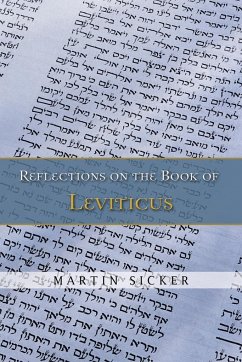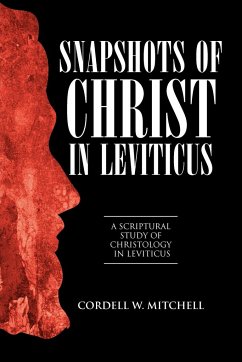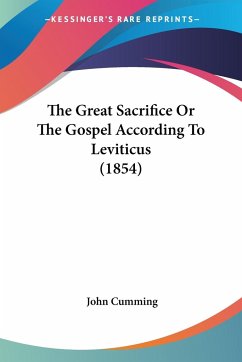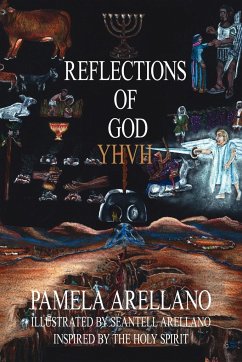
Reflections on the Book of Leviticus
Versandkostenfrei!
Versandfertig in 1-2 Wochen
28,99 €
inkl. MwSt.

PAYBACK Punkte
14 °P sammeln!
The theme that unifies the diverse contents of this biblical work is that of holiness, as the text asserts: Ye shall be holy; for I the Lord your God am holy (Lev. 19:2). The burden of the work is set forth guidelines as to how the children of Israel were to attain that goal. One of the great practical issues dealt with in Leviticus is the problem of connecting with the one and only God through the practice of a form of worship that is superficially similar to but at the same time radically different from the modes of worship practiced by the other peoples of the ancient world, which almost un...
The theme that unifies the diverse contents of this biblical work is that of holiness, as the text asserts: Ye shall be holy; for I the Lord your God am holy (Lev. 19:2). The burden of the work is set forth guidelines as to how the children of Israel were to attain that goal. One of the great practical issues dealt with in Leviticus is the problem of connecting with the one and only God through the practice of a form of worship that is superficially similar to but at the same time radically different from the modes of worship practiced by the other peoples of the ancient world, which almost universally included sacrificial rites. Because it was extremely difficult for one to relate to a deity that could not be depicted graphically, sacrificial rites were also prescribed for the children of Israel as a concession to human weakness, but were designed in a manner to leave little if any room for human inventiveness, which if left unchecked would likely result in idolatrous practices. Accordingly, the ancient rites were infused with layers of detailed instructions and obscure symbolisms that make the text difficult to comprehend, while raising important ethical considerations that are an essential aspect of the biblical concept of holiness. This study explores some of the profound ideas that lie buried beneath the surface of this extremely complex biblical text.














